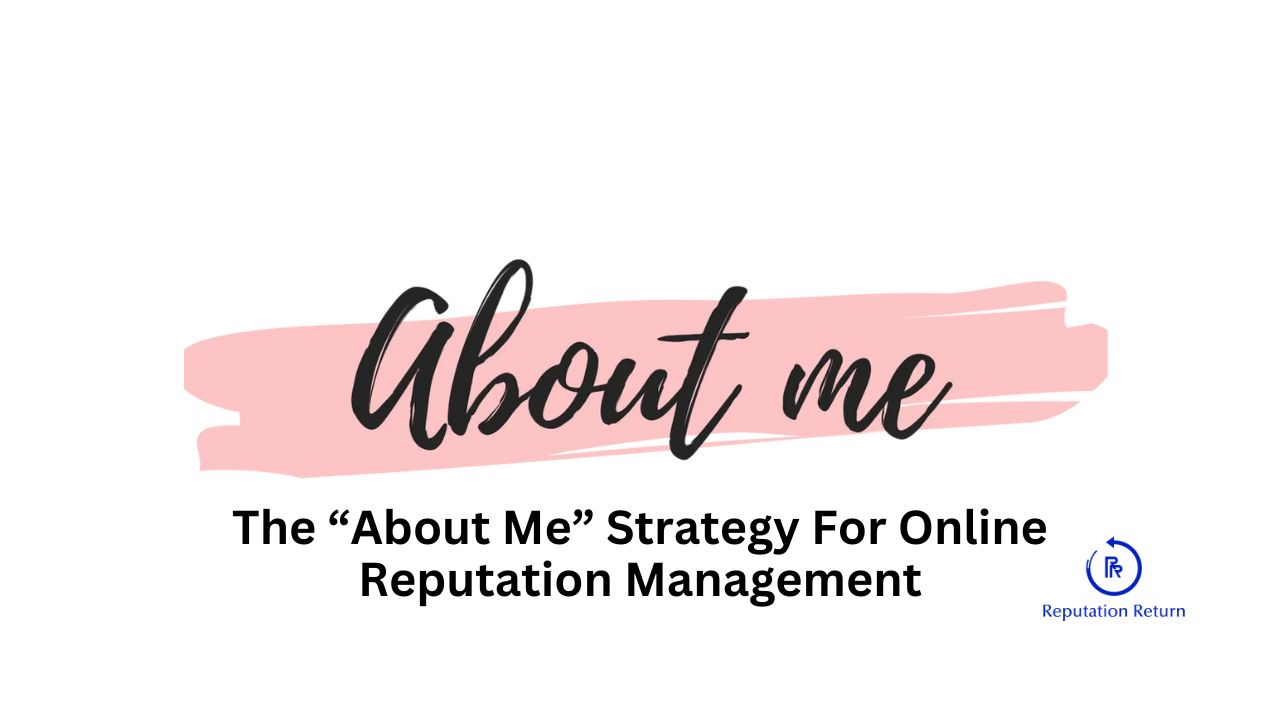Your online reputation can significantly impact both personal and professional aspects of your life. Whether you’re a job seeker, a business owner, or a professional looking to build your personal brand, managing your online presence is crucial. One effective method for controlling your digital footprint is the “About Me” strategy. This approach involves leveraging the “About Me” sections on various platforms to enhance your online reputation. This detailed guide will walk you through how to implement this strategy effectively.
Why the “About Me” Strategy Works
The “About Me” section on various online platforms is a prime piece of real estate for personal branding. Here’s why it works:
-
- Visibility: Search engines prioritize content that provides clear, authoritative information about individuals. Well-crafted “About Me” sections can rank highly in search results.
-
- First Impressions: These sections are often the first thing people see when they search for you online. A well-written bio can make a strong, positive first impression.
-
- Control: This space allows you to control the narrative about who you are, highlighting your strengths, achievements, and professional history.
Steps to Implement the “About Me” Strategy
-
- Identify Key Platforms:
-
- Social Media: LinkedIn, Facebook, Twitter, Instagram.
-
- Professional Websites: Company websites, industry-specific platforms like GitHub for developers or Behance for designers.
-
- Personal Websites: If you have a personal blog or website, the “About Me” page is crucial.
-
- Identify Key Platforms:
-
- Crafting Your “About Me” Content:
-
- Be Authentic: Authenticity resonates with audiences. Share your real story, values, and what drives you.
-
- Highlight Achievements: Include notable achievements and milestones in your career or personal life.
-
- Use Keywords: Integrate relevant keywords that people might use to search for someone with your expertise or background.
-
- Keep It Updated: Regularly update your “About Me” sections to reflect your latest achievements and experiences.
-
- Crafting Your “About Me” Content:
-
- Optimize for SEO:
-
- Keywords: Research and use keywords relevant to your profession and interests.
-
- Meta Descriptions: Ensure each profile has a compelling meta description to improve visibility in search results.
-
- Links: Include links to your other profiles, personal website, or portfolio to create a web of interconnected, authoritative sources.
-
- Optimize for SEO:
-
- Consistency Across Platforms:
-
- Unified Branding: Ensure consistency in your story, tone, and key information across all platforms.
-
- Visual Consistency: Use the same professional photo and branding elements where possible.
-
- Consistency Across Platforms:
Examples
-
- LinkedIn:
-
- Headline: Use a compelling headline that captures your professional essence.
-
- Summary: Craft a summary that outlines your career journey, key achievements, and professional values.
-
- Experience: Detail your professional experiences with a focus on achievements and contributions.
-
- Skills: Highlight relevant skills and get endorsements from colleagues and peers.
-
- LinkedIn:
-
- Personal Website:
-
- Personal Touch: Share your story in a more personal and narrative form.
-
- Portfolio: Include a portfolio of your work, testimonials, and case studies.
-
- Contact Information: Make it easy for visitors to contact you.
-
- Personal Website:
-
- Twitter:
-
- Bio: Use a succinct bio to highlight your professional role, key achievements, and a touch of personality.
-
- Pinned Tweet: Pin a tweet that showcases a significant achievement or links to your latest work or bio.
-
- Twitter:
Advanced Techniques
-
- Content Marketing:
-
- Blog Posts: Write blog posts on topics related to your expertise. Share these on your profiles to establish authority.
-
- Guest Posting: Write guest posts for industry-specific blogs or websites to reach a wider audience.
-
- Content Marketing:
-
- Public Relations:
-
- Interviews and Features: Seek opportunities for interviews and features in relevant publications. Link these in your “About Me” sections.
-
- Press Releases: Issue press releases for significant achievements or announcements, and link these to your profiles.
-
- Public Relations:
-
- Social Proof:
-
- Testimonials: Collect and display testimonials from clients, colleagues, or industry leaders.
-
- Case Studies: Develop detailed case studies showcasing successful projects or collaborations.
-
- Social Proof:
Monitoring and Maintenance
-
- Regular Updates:
-
- Keep all “About Me” sections current with the latest information, achievements, and changes in your professional life.
-
- Regular Updates:
-
- Google Alerts:
-
- Set up Google Alerts for your name to monitor new content and manage your reputation proactively.
-
- Google Alerts:
-
- Engage with Feedback:
-
- Regularly check feedback and comments on your profiles and engage positively and professionally.
-
- Engage with Feedback:
The “About Me” strategy is a powerful tool for online reputation management. By effectively leveraging the “About Me” sections across various platforms, you can shape the narrative about who you are, highlight your strengths, and ensure that when someone searches for you online, they find a professional, authentic, and positive representation. Consistency, authenticity, and regular updates are key to maintaining a strong online presence. Whether you’re looking to advance your career, grow your business, or build your personal brand, the “About Me” strategy is an essential part of your digital toolkit.

